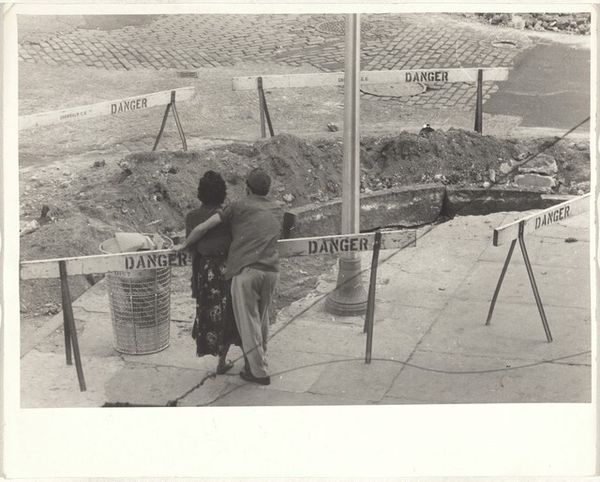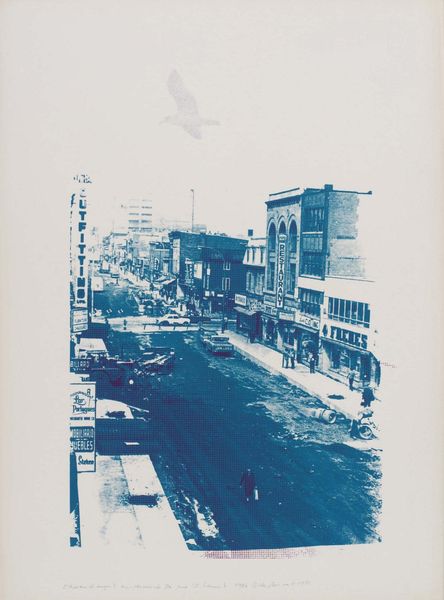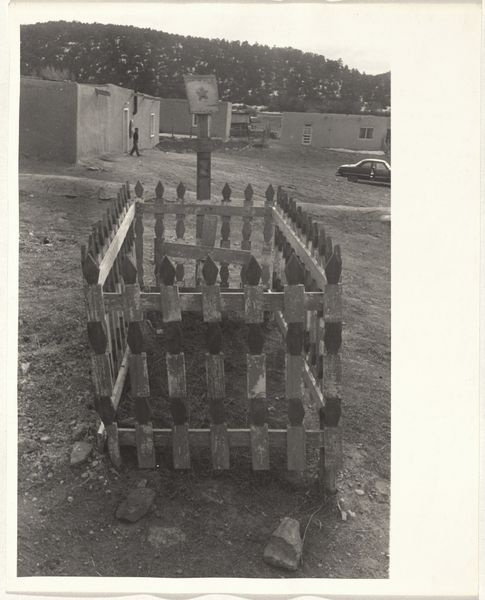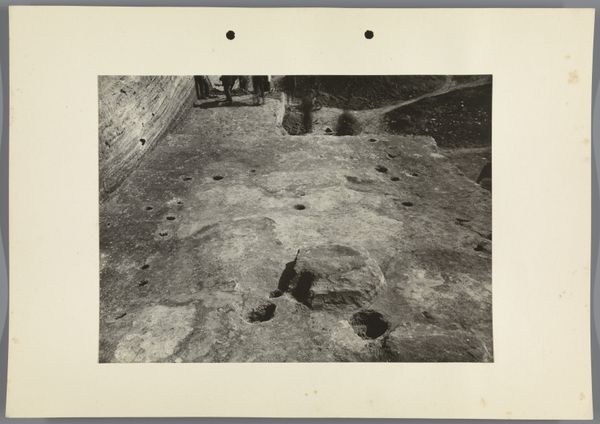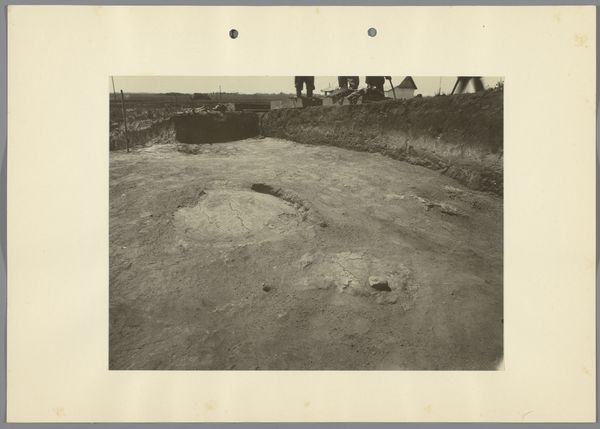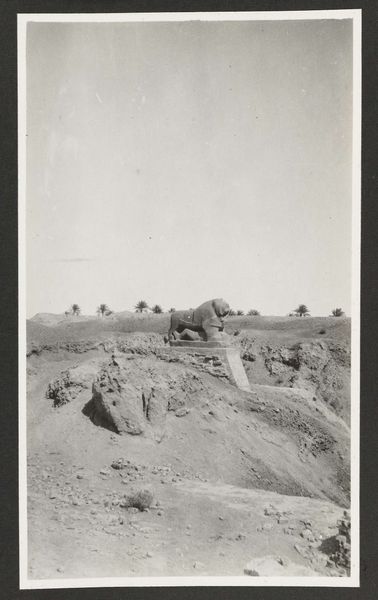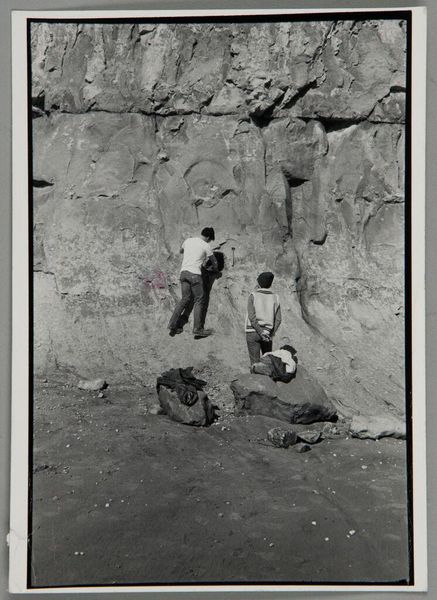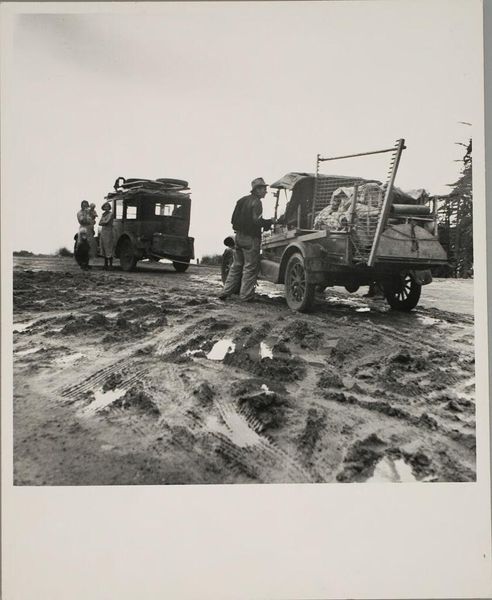
print, photography, gelatin-silver-print
#
portrait
#
print photography
# print
#
social-realism
#
street-photography
#
photography
#
gelatin-silver-print
#
cityscape
#
modernism
#
realism
Dimensions: sheet: 25.3 x 20.3 cm (9 15/16 x 8 in.)
Copyright: National Gallery of Art: CC0 1.0
Curator: Robert Frank's "Construction Worker--New York City," captured in 1956 as a gelatin silver print, immediately strikes me with its stark realism. There's a visual stratification, with the grit of labor juxtaposed against the cars on the street and signage in the background. Editor: It’s immediately somber. The subject's downward gaze and the rough, dark pit create a sense of isolation and unseen effort that defines urban development. Curator: Precisely. Frank uses tonality here in a powerful way. Notice how the light catches the upper portion of the excavation pit and filters down, drawing our eyes toward the shadowed recess containing the worker. This contrast forces the viewer to question the role of such workers within this evolving metropolis. Editor: It speaks volumes about the material conditions that produced that era. You have the manual labor that physically constructs the city situated right beneath the very symbols of postwar American prosperity: those shiny cars and advertisements promising easy enjoyment. I wonder about the availability, access, and exposure to the harsh conditions and materials faced by those building cities in those days. Curator: Indeed, the image is a study in the semiotics of urban space. The worker, framed within the earth itself, becomes a symbol of unseen labor, in direct contrast with the consumerism bustling behind him. He’s literally below the surface. Editor: Consider, too, Frank's choices regarding material process. The grainy texture of the gelatin silver print itself emphasizes the rawness and reality of the scene, rejecting any romantic notions about labor or the urban experience. This wasn't intended to be easily digestible or comfortable to examine. Curator: A point well taken. The aesthetic choices Frank makes work in unison to enhance our experience of the image as a potent symbol of the social structures governing that space. His formalism underscores that deeper narrative. Editor: And by considering the photograph itself as a physical artifact, a silver gelatin print born from a chemical process rooted in labor and time, we bring a greater appreciation for both Frank’s artistic intent and the labor practices captured on that day. Curator: A stimulating point of view which brings greater awareness to the physical qualities inherent in creating these pieces of art and their connection to that time. Editor: Agreed, contemplating "Construction Worker—New York City" from both perspectives opens avenues for enriching one's understanding of our societal landscape.
Comments
No comments
Be the first to comment and join the conversation on the ultimate creative platform.
